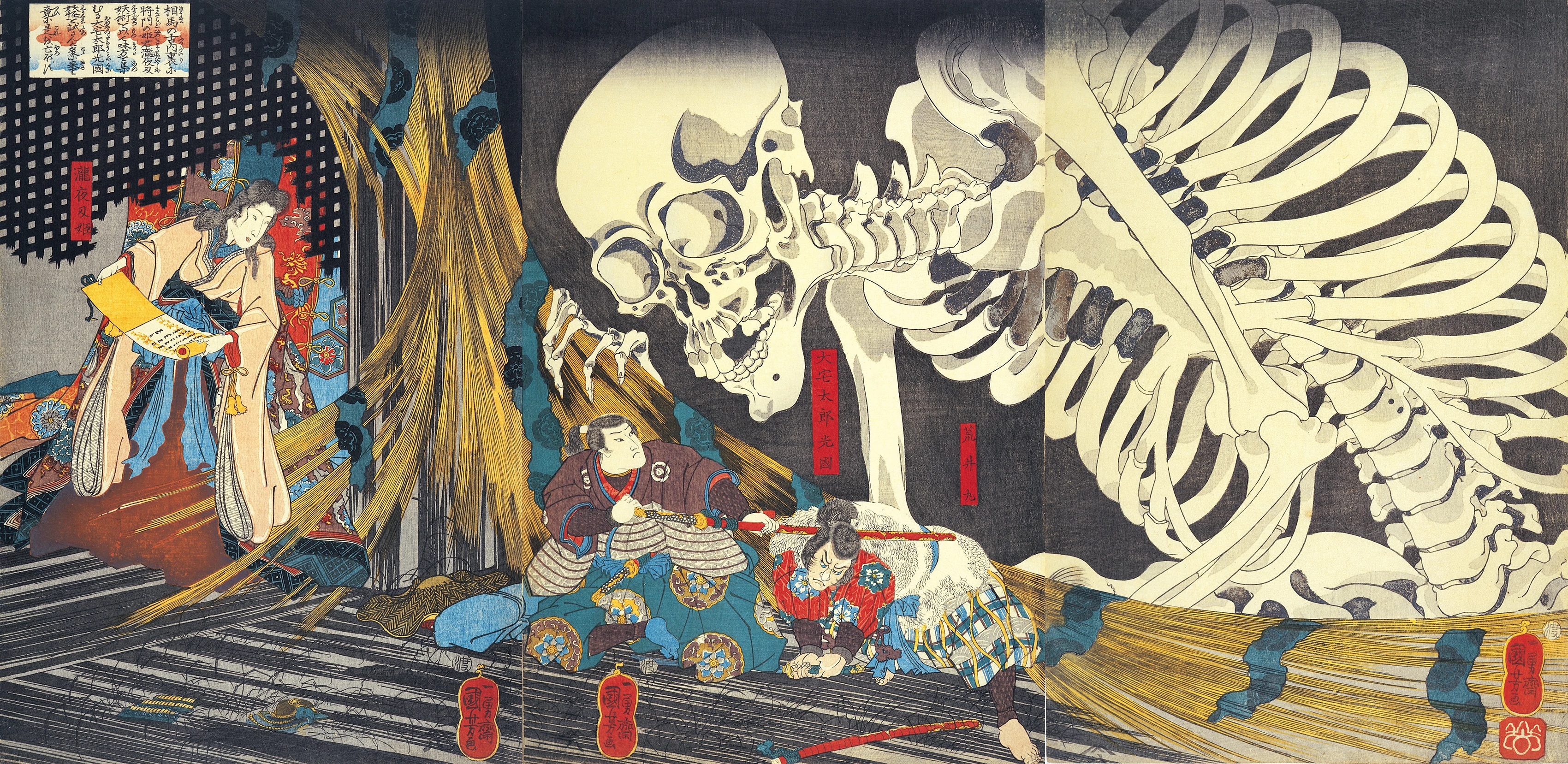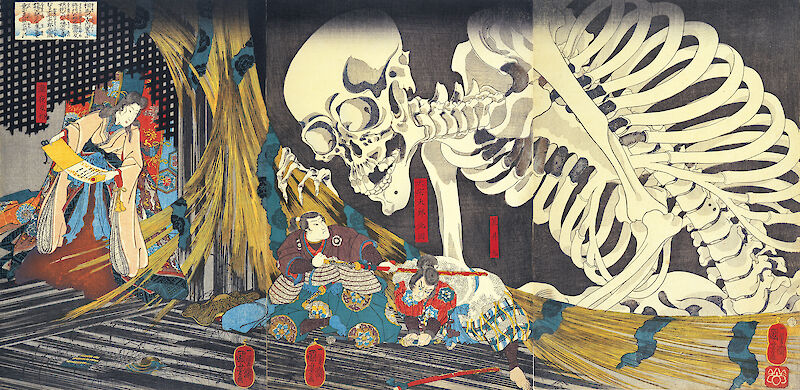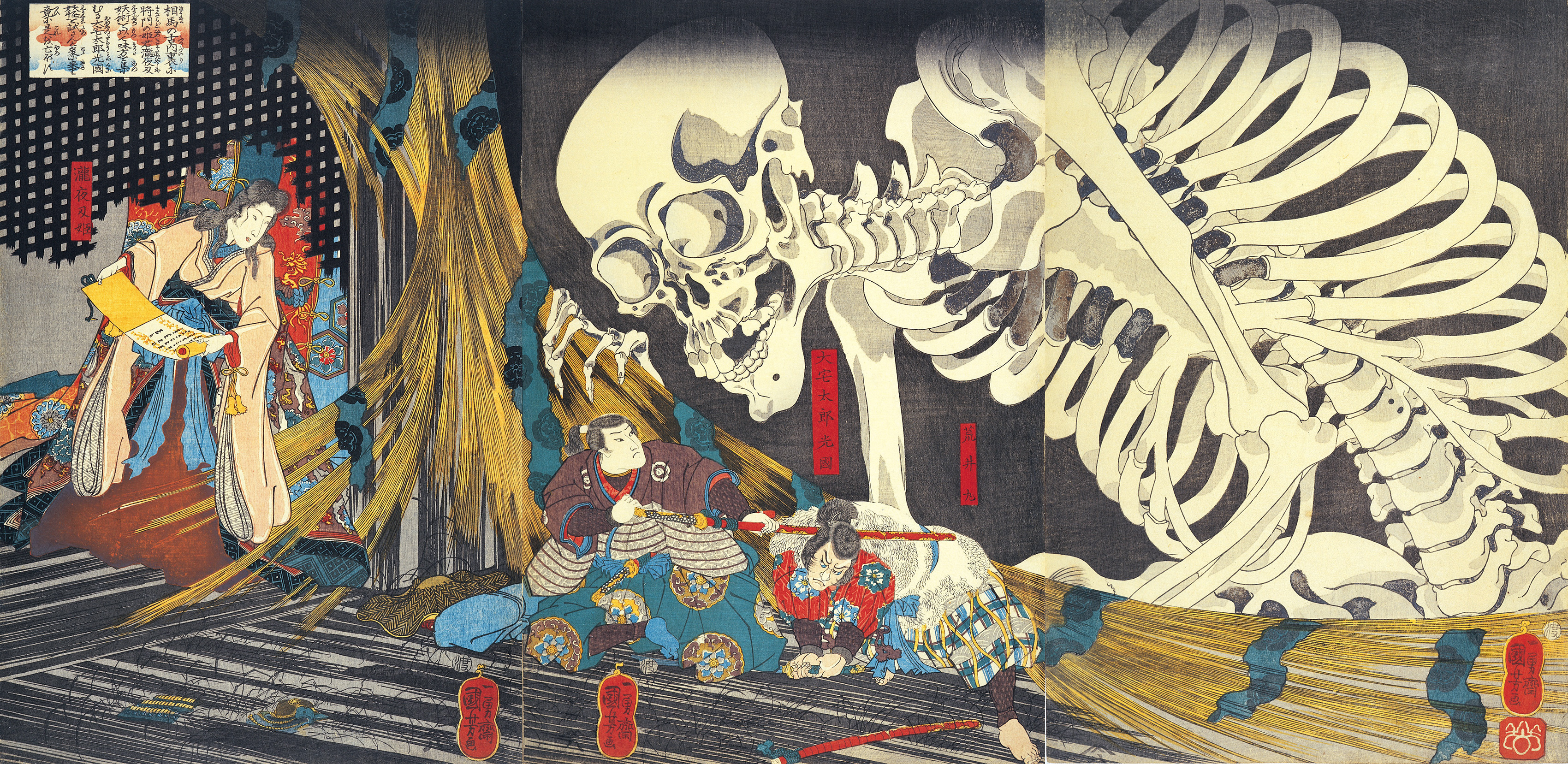


In 939CE in the Heian period in Japan, the samurai warlord Taira no Masakado marched west from his home in Kantō, leading a doomed army against Japan’s central government in Kyoto. After fifty-nine days of victories against government outposts, Masakado’s cousin, Taira no Sadamori, faced down his army and killed Masakado in the battle of Kojima.
This image tells the strange story of what came after the revolt. Masakado’s daughter, the Princess Takiyasha, lives in the family’s shōen, the once great palace of Soma. The ghosts of soldiers fallen in the revolution haunt the moldering ruins, and Princess Takiyasha has turned to witchcraft. She meets with a mountain hermit and studies dark magic, plotting revenge on her uncle Sadamori, who cut off her father’s head and carried it to Tokyo.
In this print we see the princess on the left, framed in the broken palace blinds. She grips a magic scroll, reading the spell to summon a Gashadokuro. Let’s take a moment to appreciate this monstrous yōkai of Japanese imagination. Gashadokuro appear as gigantic skeletons, assembled from the combined bones of famine victims, or in this case, the bodies of the soldiers that followed Masakado to their deaths. These towering spirits were believed to haunt isolated country roads, snatching up solitary travelers to bite off their heads and drink their gouting blood. Edo Japan knew a thing or two about ghost stories.
So Princess Takiyasha reads her scroll, and the Gashadokuro rips through a curtain wall. Below the monster, cower Ōya Taro Mitsukuni and another samurai, agents of the emperor sent to hunt down the princess. And while contemporary eyes might understandably side with the vengeful princess and her magic monster (I'm looking at you Pixar), the hero of this image is supposed to be Mitsukuni, who valiantly defeated the witch and her beast in service of the Emperor.
This delightful horror story is from the Story of Utö Yasutaka, written in 1807 by the Edo poet Santö Kyöden, and captured in this print by the Ukiyo-e artist Utagawa Kuniyoshi. Kuniyoshi illustrated many tales from Japanese folklore, history and myth, and Princess Takiyasha was well-known to him and his audience.
One more note on the giant skeleton. In Edo Japan, the study of anatomy was considerably less systematic than in Europe, so the detail and accuracy Kuniyoshi brought to his Gashadokuro skeleton is marvelous for its day. It’s thought that Kuniyoshi owned a copy of a rare and influential book called the Kaitai Shinsho, or the New Book of Anatomy, a volume of 40 woodcut scientific illustrations by the German physician Johann Adam Kulmus translated into Japanese by the Edo physician and scholar Sugita Genpaku.
...
Got questions, comments or corrections about Takiyasha the Witch and the Skeleton Specter? Join the conversation in our Discord, and if you enjoy content like this, consider becoming a member for exclusive essays, downloadables, and discounts in the Obelisk Store.
